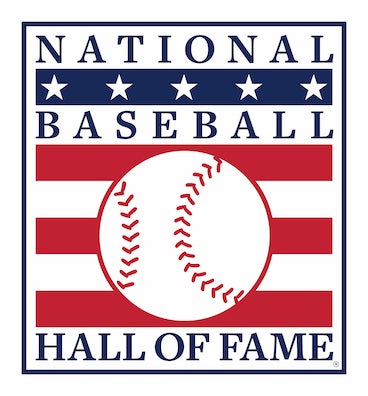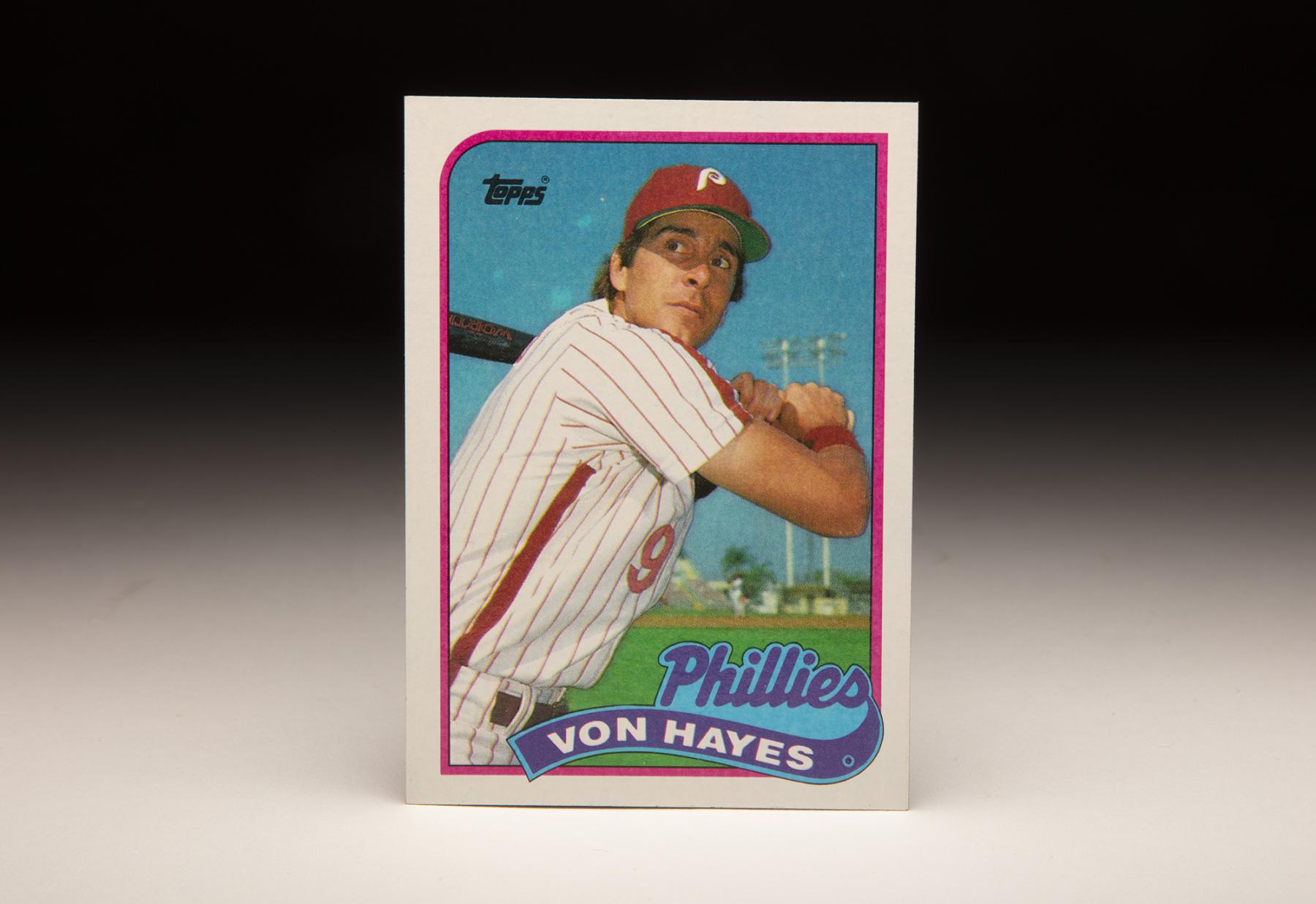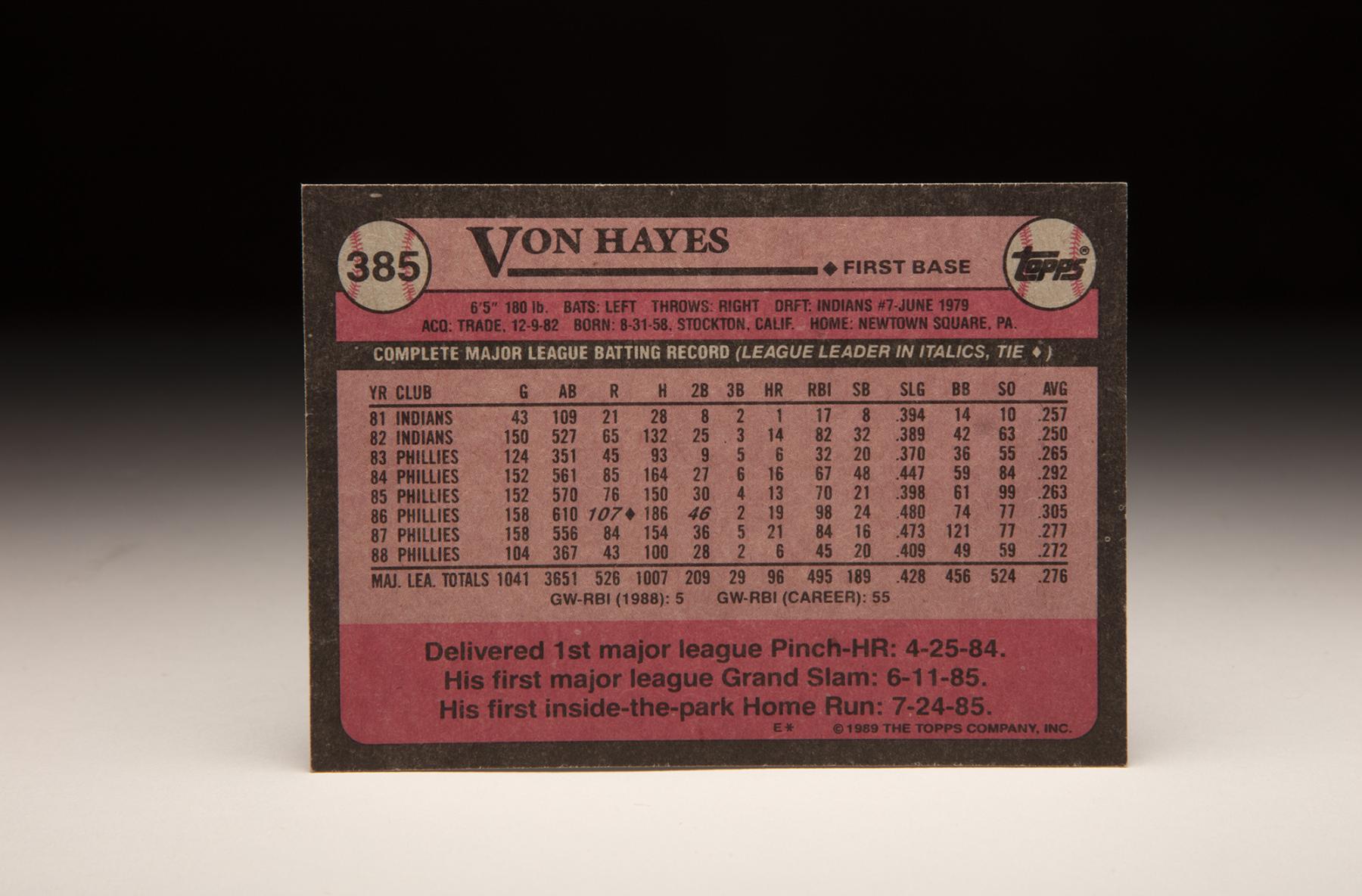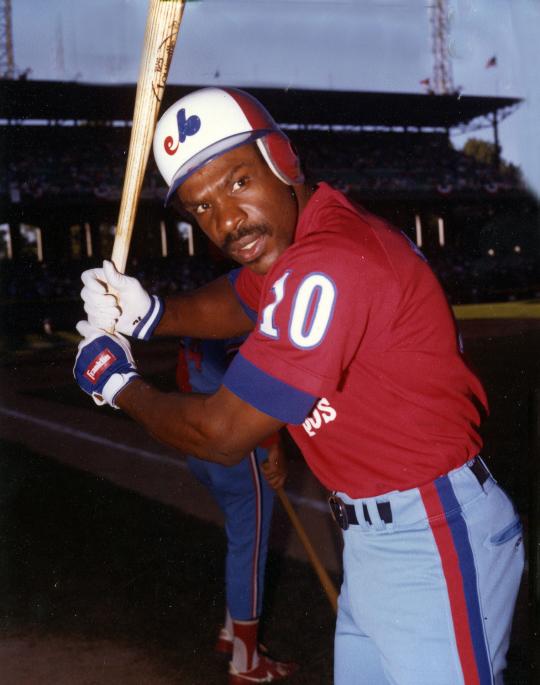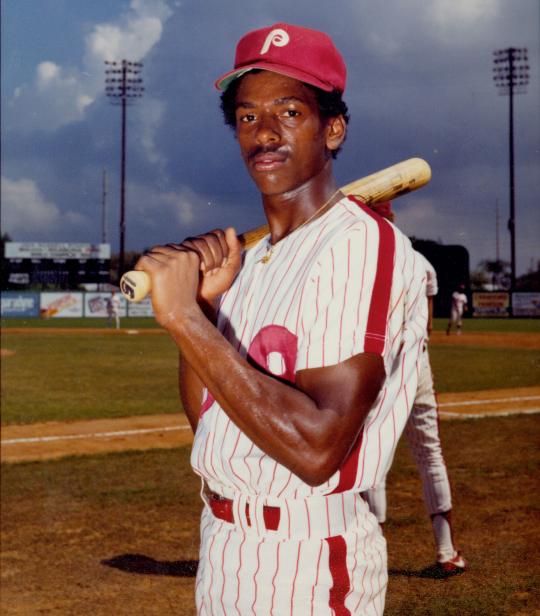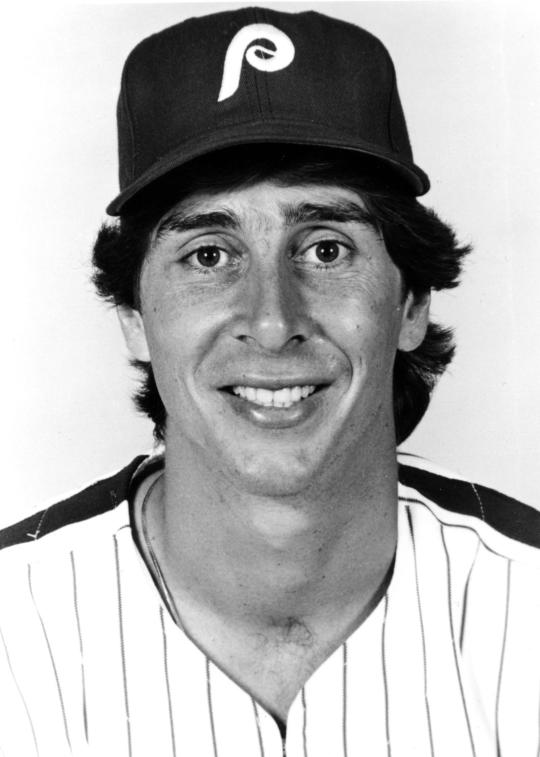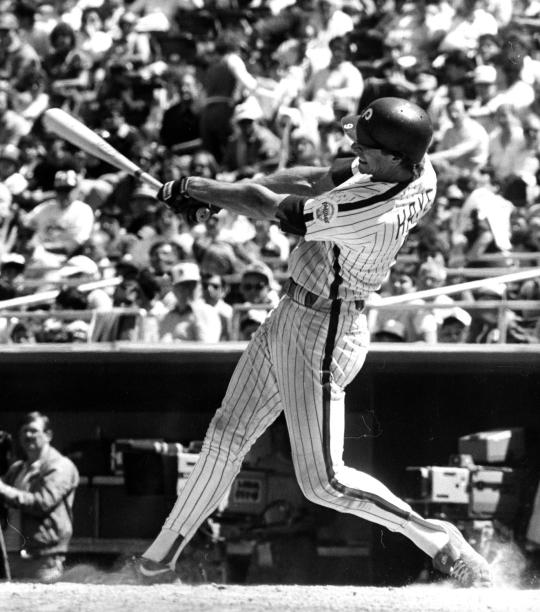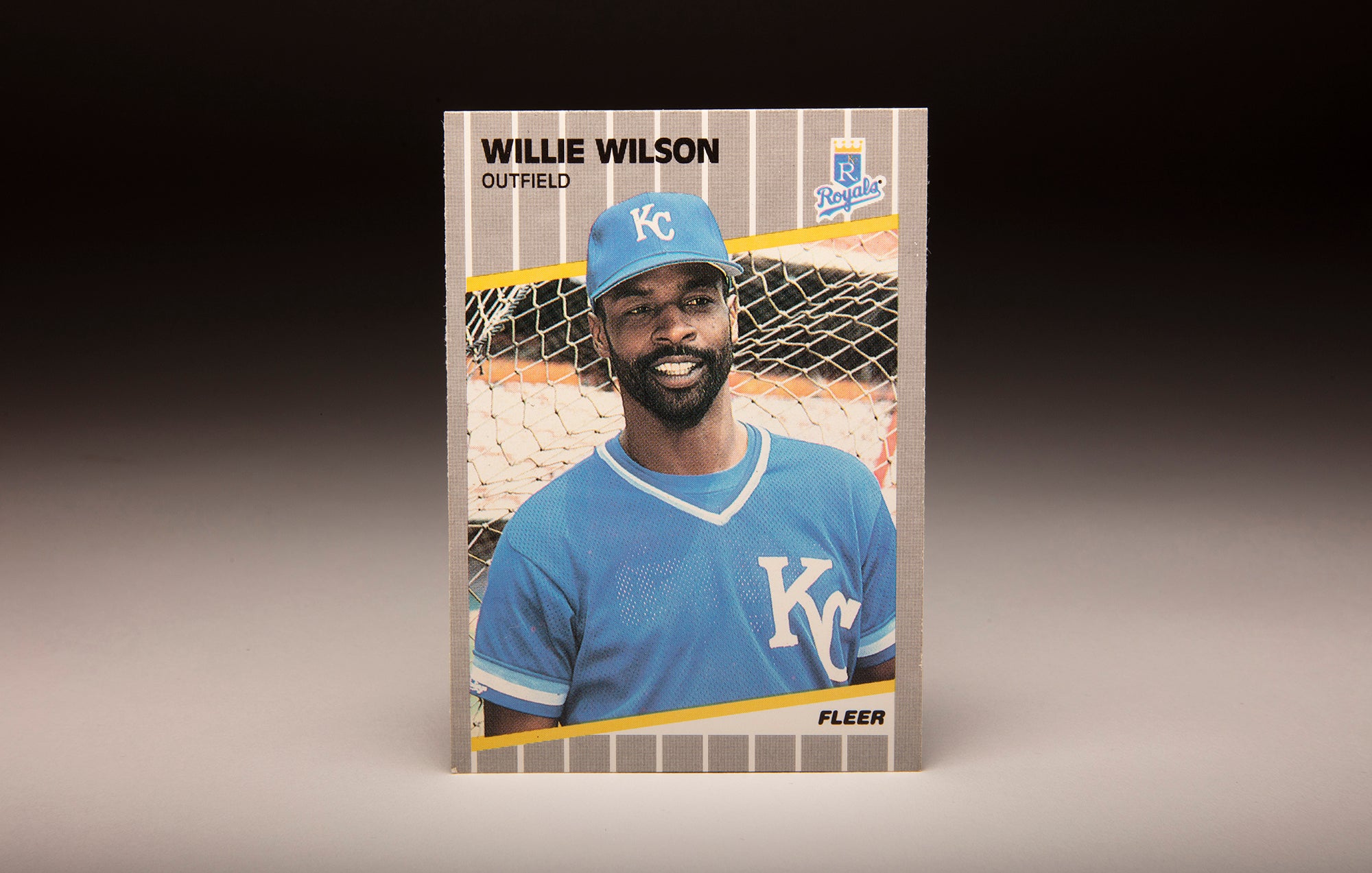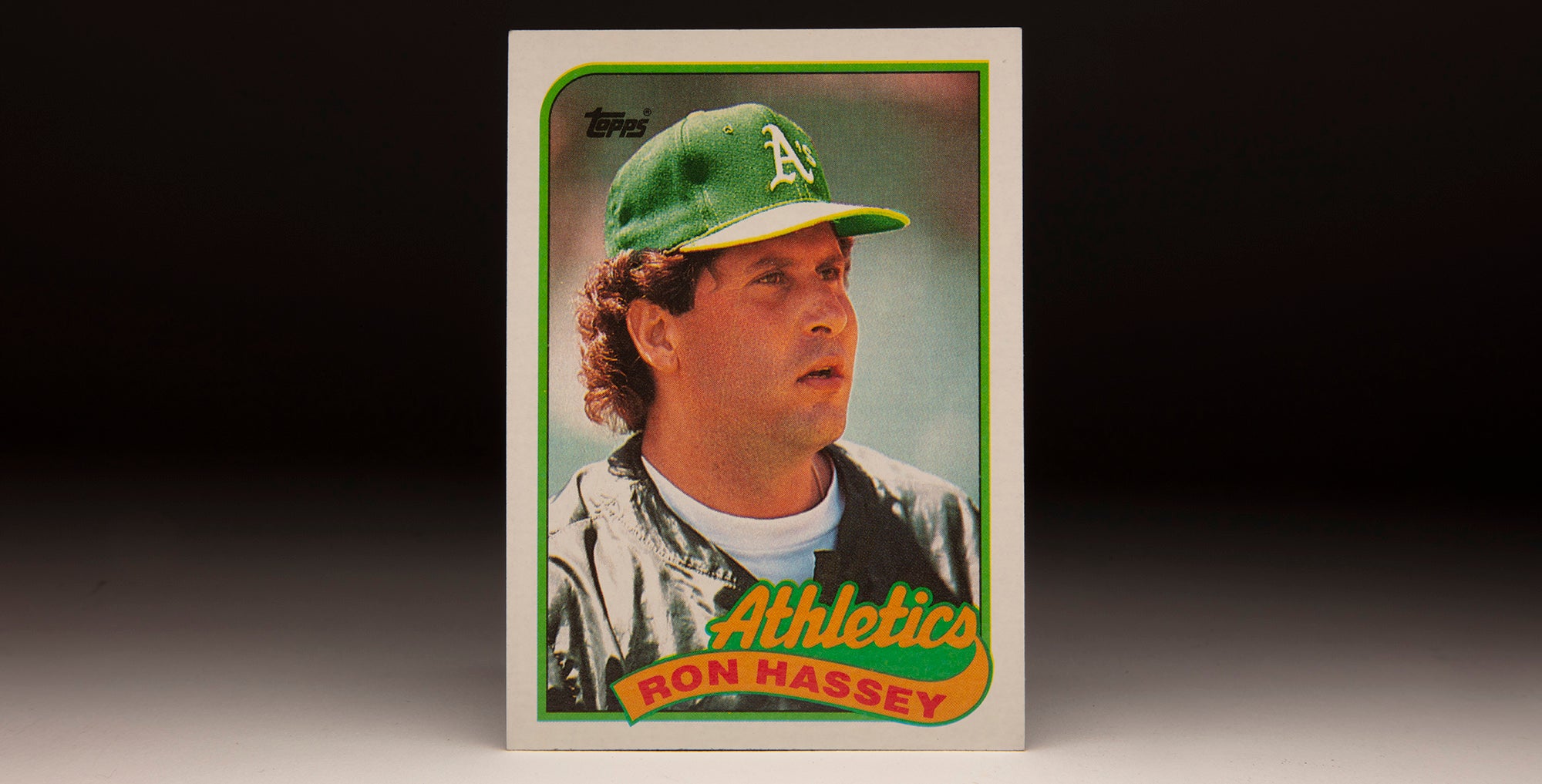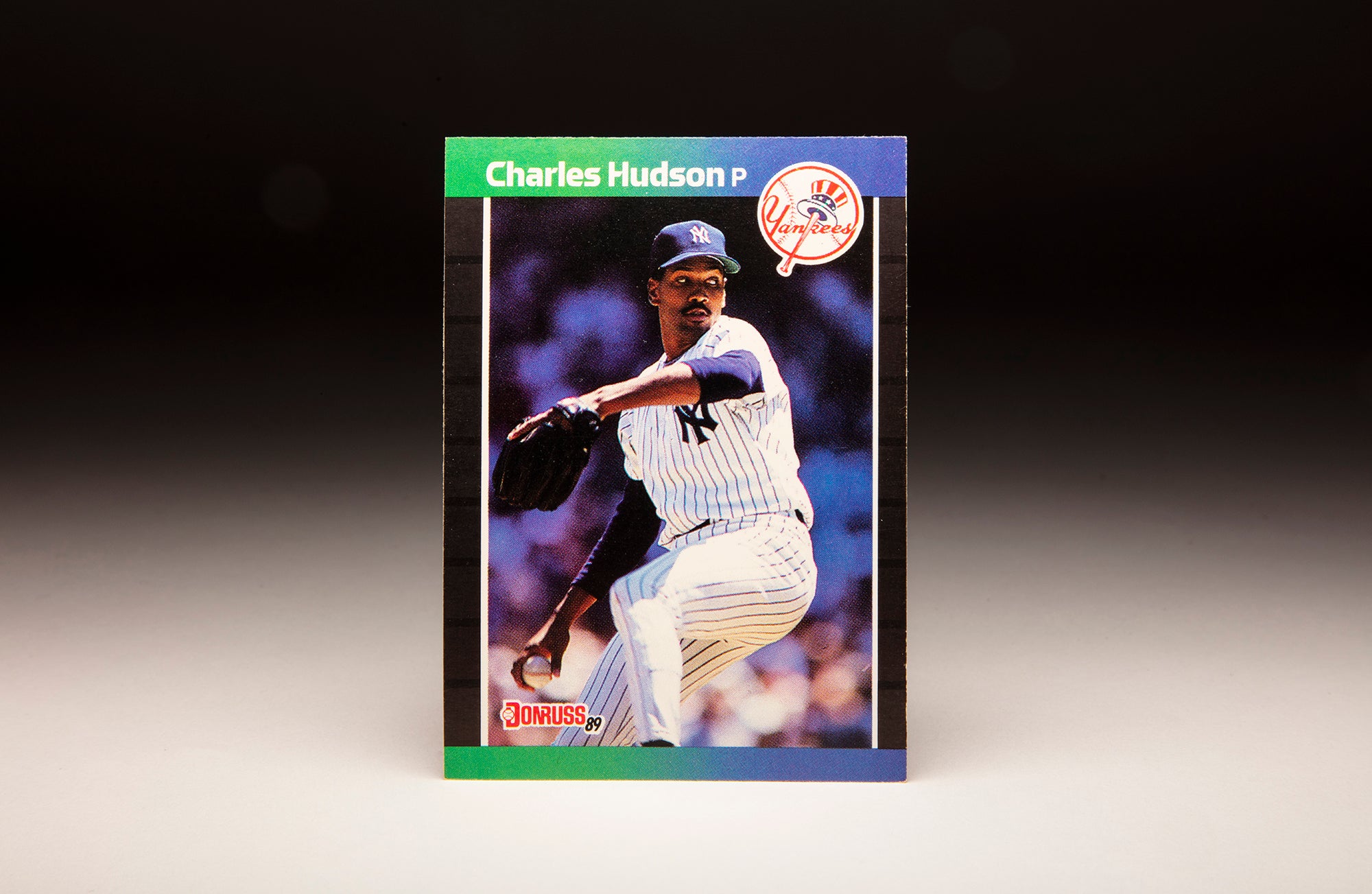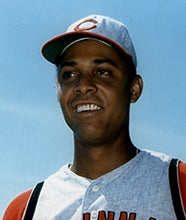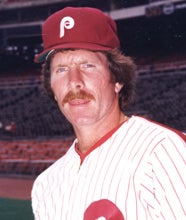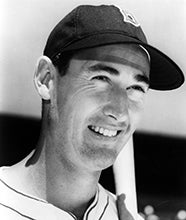- Home
- Our Stories
- #CardCorner: 1989 Topps Von Hayes
#CardCorner: 1989 Topps Von Hayes
He flashed a power/speed combo rarely seen in the early 1980s, and Von Hayes became so highly valued that the Philadelphia Phillies sent five players to the Cleveland Indians in exchange for Hayes’ contract after Hayes had played just one full big league season.
It was a deal that defined Hayes’ career but never paid massive dividends for either side. Still, Hayes fulfilled much of his promise as a multi-talented big leaguer for more than a decade.
Von Francis Hayes was born Aug. 31, 1958, in Stockton, Calif. The child of a Puerto Rican mother who became a nurse and moved to California, Hayes experienced a huge growth spurt during his final years of high school and into college, adding 10 inches to shoot up to his eventual height of 6-foot-5. His father, who had taught him to hit left-handed, encouraged his son to stay the course during days when he was overlooked on his own high school team.
Always hyper competitive, Hayes quickly changed from an overachiever to a pro prospect.
Recruited as a pitcher, Hayes enrolled at St. Mary’s College of California in Moraga. He shifted to the infield and demonstrated a smooth left-handed swing that would one day be compared to Ted Williams’.
Official Hall of Fame Merchandise
Hall of Fame Members receive 10% off and FREE standard shipping on all Hall of Fame online store purchases.
Hall of Fame Membership
There is no simpler, and more essential, way to demonstrate your support than to sign on as a Museum Member.
In 1979, Hayes played for the United States team in the Japan-U.S. Collegiate Baseball Championships and was named the Most Valuable Player of the series. A month before, Hayes was selected in the seventh round of the MLB Draft by Cleveland – and Hayes held out until he got the offer he wanted.
In 1980, the Indians sent Hayes to Class A Waterloo of the Midwest League to begin his pro career, installing him at third base. He responded with a season that immediately moved him to the top of prospect lists throughout the game, hitting .329 – best in the league – with 105 runs scored, 15 homers, 90 RBI, 51 stolen bases and a .405 on-base percentage. He was named the Midwest League’s Most Valuable Player.
But after his eye-popping season in Waterloo, Hayes was sent to the Florida Instructional League – where he was attacked by two assailants while walking home one night. The attempted robbery left him with a fractured jaw after Hayes was hit by what police believed was an iron pipe.
“I had to have root canal work done to save my teeth,” Hayes told the Oakland Tribune. “Maybe I was pretty dressed up and they thought I had money.”
After recovering, Hayes played for two months in Puerto Rico, soaking in advice from Orlando Cepeda and Cookie Rojas.
The Indians then brought Hayes to Spring Training in 1981, where the prevailing thought was that he would quickly return to the minors for more seasoning. But after Hayes hit .367 with 15 runs scored, 18 RBI and nine stolen bases – and committed nine errors at third base – Cleveland manager Dave Garcia decided to put Hayes on the big league roster.
“It’s been a little bit mind blowing,” Hayes told the Akron Beacon Journal. “The first week, I slept maybe 10 hours. When I started playing, I started to settle down and relax. Until then, I was really on edge; my nerves were shot.”
Hayes got his chance at third base that spring after an injury to incumbent Toby Harrah – who fell off a ladder at his home in the offseason – opened a spot in the lineup. But as Harrah got stronger, Hayes’ time diminished.
“The kid (Hayes) is going to be a very good big league ballplayer,” Garcia told the Akron Beacon Journal. “But don’t forget that Toby already is.”
After appearing in one game as a defensive replacement in right field and failing to record a plate appearance, Hayes was optioned to Triple-A Charleston on April 17 when Andre Thornton was activated from the disabled list.
“When I came here with the club I figured it was only as an emergency until they were sure Toby could play,” Hayes told the News-Journal of Mansfield, Ohio. “Naturally there’s a letdown, but I’m content. I want to play, and I’m not playing here.”
In Triple-A, Hayes proved his 1980 season was not a fluke, hitting .314 with 10 homers, 73 RBI, 34 stolen bases and a .401 on-base percentage in 105 games. Recalled to the Indians following the resumption of the season after the strike, Hayes saw most of his time at DH and in left field, finishing the big league season with a .257 average and eight steals in 43 games.
On Dec. 9, 1981, the Indians traded Jorge Orta – who spent the 1981 campaign as Cleveland’s right fielder – to the Dodgers in a package that brought pitcher Rick Sutcliffe and second base prospect Jack Perconte to Cleveland. The deal was widely perceived as opening a spot for Hayes.
But two months later, the Indians acquired veteran right fielder Bake McBride in a deal for pitcher Sid Monge, complicating Hayes’ status.
“Von Hayes is an outstanding prospect,” Garcia told the Associated Press. “But Bake McBride has been an outstanding major leaguer.”
Garcia – committed to Harrah at third base – juggled his outfield to start the season, as Hayes played games in left and right and even in center. But when McBride contracted an eye infection that sidelined him for the season in mid-May, Hayes moved into right field permanently.
By the end of the season, Hayes was hitting .250 with 14 homers, 25 doubles, 82 RBI and 32 stolen bases – making him the only player other than Andre Dawson with at least 14 homers, 30 steals and 80 RBI in 1982. He finished seventh in the American League Rookie of the Year voting – and earned a reputation as one of the game’s most intense players by tossing helmets and taking bats to trash cans when the hits didn’t come.
But with the Indians seemingly set to play Hayes in right field for the next decade, the Phillies offered five players – Jay Baller, George Vukovich, Jerry Willard, three-time Gold Glove Award-winning second baseman Manny Trillo and top prospect Julio Franco – for Hayes at the 1982 Winter Meetings in Hawaii.
The deal sent shockwaves around the baseball world.
“They overwhelmed us,” Indians general manager Phil Seghi told the News-Journal of Mansfield, Ohio. “We wouldn’t have traded a player like Von if they didn’t. I’m sure people are going to be upset because they’ve only seen Hayes play. But we got a bundle.”
Hayes joined a veteran Phillies team that featured Steve Carlton, Mike Schmidt and Pete Rose and would later add Joe Morgan and Tony Pérez, earning the nickname the Wheeze Kids.
Hayes was tagged with another nickname that would stick with him for his entire career: Five-for-One.
“I’m shocked at what went across the table for me,” Hayes said following the trade. “I’m really excited. I’m glad that I’ll be playing on a contender.”
Hayes would also be playing with pressure, as the deal was the largest for one player since the Giants sent seven men to the Athletics in 1978 in exchange for Vida Blue.
“The first thing I told myself,” Hayes said in an interview with the Philadelphia Inquirer, “was: ‘You’re not going to try and go out there and prove that you can play as good as those five combined. They didn’t get me to play second base or anything like that. They got me to be Von Hayes.”
Hayes injured his shoulder during the first week of Spring Training and also battled a bruised thigh, leaving him with a .111 batting average in mid-May and hearing boos from Philadelphia fans. But Hayes recovered with a strong second half, finishing with a .265 batting average and 20 steals in 124 games.
“The only person who can stop Von Hayes from becoming a superstar is Von Hayes,” said Larry Milbourne, a teammate with the Indians and the Phillies.
The Phillies won the NL East and defeated the Dodgers in the NLCS before losing to the Orioles in the World Series. Hayes, however, was relegated to the bench as Philadelphia manager Paul Owens went with an outfield of Gary Matthews in left, Garry Maddox in center and Sixto Lezcano in right. Hayes totaled just five plate appearances in six games and did not record a hit.
Faced with the same crowded outfield problem to start the 1984 season, the Phillies traded Matthews to the Cubs – along with young outfielder Bob Dernier and pitcher Porfi Altamirano for pitcher Bill Campbell and catcher Mike Diaz on March 26, 1984.
Hayes spent much of the 1984 season in center field as Maddox battled injuries and age. In 152 games, Hayes hit .292 with 85 runs scored, 16 homers, 67 RBI and 48 steals. But the Phillies finished in fourth place with a record of 81-81.
Philadelphia would not return to the postseason until 1993 – by which time Hayes’ career was over. But Hayes continued to be a solid-if-not-spectacular big leaguer.
In 1985, Hayes hit .263 with 70 RBI, 21 steals and 13 homers – two of which came in the first inning vs. the Mets in a 26-7 victory. Moved into the leadoff spot by manager John Felske, Hayes became the first leadoff hitter in history to hit two home runs in the first inning. His second homer was a grand slam, and Hayes finished the night with six RBI.
“It was by far the best individual performance of my career,” Hayes told the Lancaster New Era. “It was the best team performance I’ve ever been associated with.”
Then in 1986, Hayes put together his best big league season after the Phillies installed him at first base. He led the NL with 107 runs scored and 46 doubles, hit .305 with 19 homers and 98 RBI and stole 24 bases – his fifth straight season with at least 20 steals.
He finished eighth in the National League Most Valuable Player voting, and the Phillies signed Hayes to a new three-year contract worth $3.9 million.
“Hopefully, Von will be around for another 10 years,” Phillies president Bill Giles told the Morning News of Wilmington, Del.
Hayes had another outstanding season in 1987, hitting .279 with 21 homers, 84 RBI, 16 steals and 121 walks – the final figure boosting his on-base percentage to a career-best .404. But in 1988, an elbow injury sidelined Hayes for much of July and all of August. Hayes also got into a shouting match in the dugout with manager Lee Elia in June after Hayes tossed his helmet in frustration, accidentally hitting his manager with the headgear.
Hayes finished the season with a .272 batting average and 20 steals but only six home runs in his 105 games.
Hayes came out of the gate hot in 1989, hitting .382 through April, earning NL Player of the Month honors and setting the stage for Hayes’ first All-Star Game selection that summer. But when Phillies icon Mike Schmidt abruptly retired on Memorial Day, Philadelphia’s season began to unravel. Hayes finished the year with a .259 batting average, a career-high 26 homers, 78 RBI and 101 walks – but the Phillies finished last in the NL East.
Days after Schmidt retired, Hayes signed a three-year extension – with two option years – that could have been worth $11 million had all the options been exercised. The Phillies were now in the process of assembling the team that would win the 1993 NL pennant, and Hayes was the club’s veteran leader.
He hit .261 with 17 homers and 73 RBI in 1990 despite playing in just 129 games due to a foot injury and a lacerated left pinkie sustained when he was assembling an exercise machine in his home.
Then in 1991, Hayes was hitting just .226 – and was surrounded by trade rumors – when he was hit on the right wrist by a pitch from the Reds’ Tom Browning on June 14. The resulting broken ulna bone sidelined Hayes until September, and he finished the year with a .225 average, no home runs and 21 RBI in 77 games.
On Dec. 8, the Phillies traded Hayes to the Angels for Kyle Abbott and Ruben Amaro.
“It was very, very difficult for (Hayes) to play in Philadelphia,” Phillies manager Jim Fregosi told the Philadelphia Inquirer after the trade. “I think he put too much pressure on himself to do well. To me, there’s no question that Von Hayes will come back and have a pretty good year.”
Hayes played in 94 games for the Angels in 1992, hit .225 again and was released on Aug. 21, ending his big league career. He would manage in the Athletics’ minor league system in the 2000s and later skipper teams in independent ball.
His final big league totals: a .267 batting average over 12 seasons, with 1,402 hits, 143 home runs and 253 stolen bases. But for a period of time early in his career, Von Hayes was unquestionably one of the game’s hottest prospects – and most coveted commodities.
“I just get into the game so much,” Hayes told the Philadelphia Inquirer of his passion for baseball. “I think maybe that’s why I’m able to be so easygoing off the field – because I let everything out on the field.”
Craig Muder is the director of communications for the National Baseball Hall of Fame and Museum
